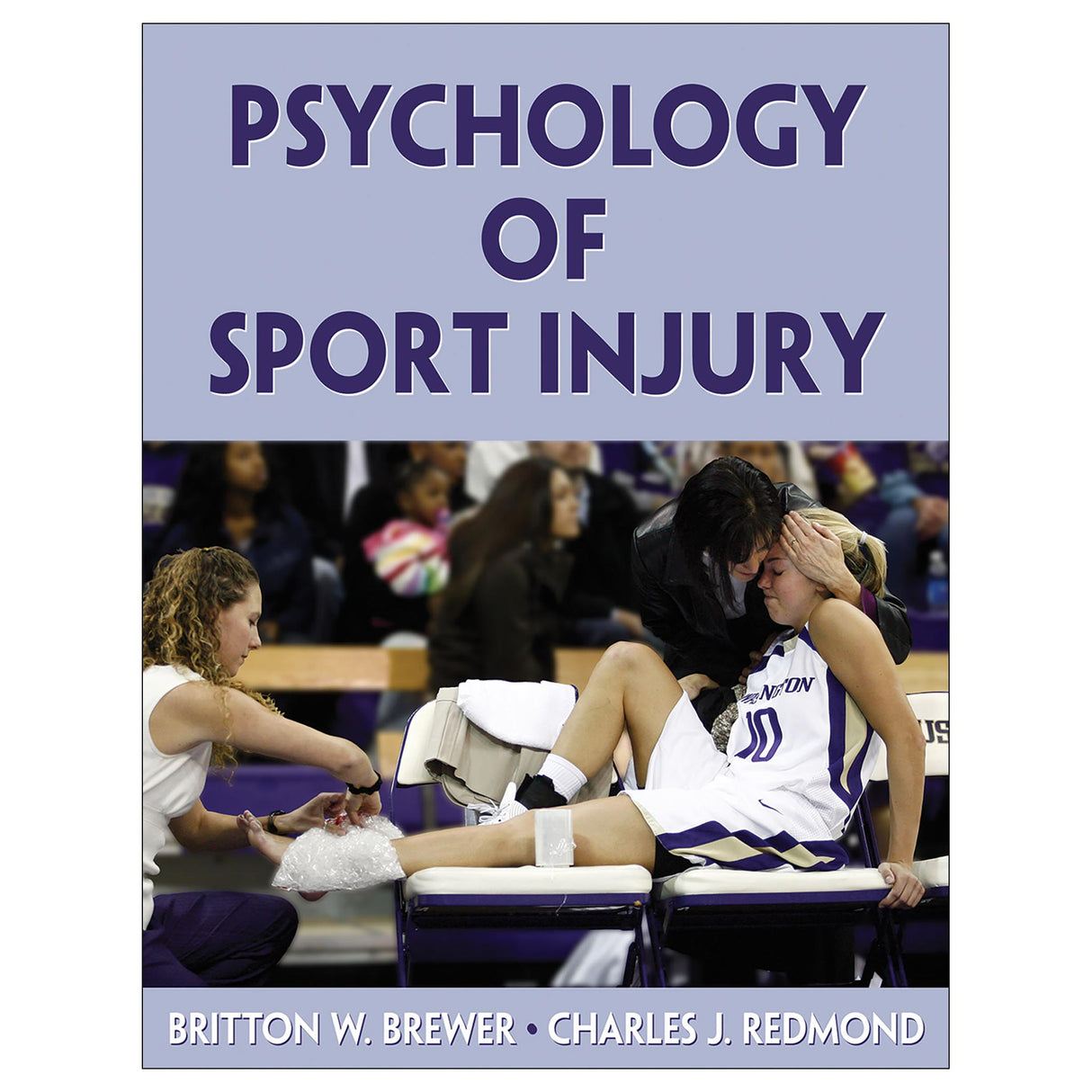Psychology of Sport Injury
Author: Britton W. Brewer, Charles J. Redmond
$49.00 CAD
From a gymnast hiding ankle pain so she can compete to a basketball player who withdraws from friends after a season-ending injury, it can be argued that every sport injury affects or is affected in some way by psychological factors. Given the widespread importance of psychological issues in sport injury, it is important for those working with athletes—injured or not—to be aware of the latest developments on the subject.
Written by a sport psychology consultant and an athletic trainer, Psychology of Sport Injury provides a thorough explanation of the elements and effects of sport injuries along with up-to-date research and insights for practical application. The authors offer a contemporary approach to preventing, treating, rehabilitating, and communicating professionally about sport injuries that takes into account physical, psychological, and social factors.
Psychology of Sport Injury presents sport injury within a broader context of public health and offers insights into the many areas in which psychology may affect athletes, such as risk culture, the many facets of pain, athlete adherence to rehab regimens, the relationship between psychological factors and clinical outcomes, collaboration, and referrals for additional support. The book explores the relevant biological, psychological, and social factors that affect given circumstances. The text consists of four parts: Understanding and Preventing Sport Injuries, Consequences of Sport Injury, Rehabilitation of Sport Injury, and Communication in Sport Injury Management.
Psychology of Sport Injury includes evidence-based examples and demonstrates real-world applications that sport health care professionals often face with athletes. Additional pedagogical features include the following:
• Focus on Research boxes provide the what and why of the latest research to complement the applied approach of the text.
• Focus on Application boxes highlight practical examples to illustrate the material and maintain student engagement.
• Psychosocial content aligned with the latest educational competencies of the National Athletic Trainers’ Association (NATA) helps students prepare for athletic training examinations and supports professional development for practitioners.
• A prevention-to-rehabilitation approach gives a framework for understanding sport injury, including precursors to injury, pain as a complex phenomenon, adherence to rehabilitation, and communication and management of injuries with other health care professionals as well as the athlete.
• A set of chapter quizzes and a presentation package aid instructors in testing student comprehension and preparing lectures.
Psychology of Sport Injury is an educational tool, reference text, and springboard to new ideas for research and practice in any line of work exposed to sport injury. Observing and committing to athletes, especially during times of physical trauma and emotional distress (which are often not separate times), are critical skills for athletic trainers, physical therapists, sport psychologists, coaches, and others who work with athletes on a regular basis.
Audience
Textbook for entry-level graduate students and upper-level undergraduate students studying sport psychology, athletic training, physical therapy, physiotherapy, and kinesiology; also a reference for professionals in those areas. Resource for sport psychology and sports medicine researchers, academic and professional libraries, and sport psychology consultants.
Part I. Understanding and Preventing Sport Injuries
Chapter 1. Biopsychosocial Foundations of Sport Injury
A Biopsychosocial Perspective on Sport Injury
Biological Foundations of Sport Injury
Psychological Foundations of Sport Injury
Social Foundations of Sport Injury
Biopsychosocial Analysis
Summary
Chapter 2. Antecedents of Sport Injury
Models of Sport Injury Occurrence
Psychosocial Predictors of Sport Injury
Mechanisms of Psychosocial Influence on Sport Injury Occurrence
Biopsychosocial Analysis
Summary
Chapter 3. Sport Injury Prevention
Types of Prevention
Models of Sport Injury Prevention
Sport Injury Prevention Content Categories
Biopsychosocial Analysis
Summary
Part II. Consequences of Sport Injury
Chapter 4. Psychological Responses to Sport Injury
Models of Psychological Response to Sport Injury
Psychological Consequences of Sport Injury
Biopsychosocial Analysis
Summary
Chapter 5. Pain, Sport, and Injury
Definitions of Pain
Types of Pain
Dimensions of Pain
Measurement of Pain
Models and Theories of Pain
Factors Associated with Pain in Sport
Interpreting and Acting on Sport-Related Pain
Biopsychosocial Analysis
Summary
Part III. Rehabilitation of Sport Injury
Chapter 6. Adherence to Sport Injury Prevention and Rehabilitation Programs
Adherence to Sport Injury Prevention Programs
Adherence to Sport Injury Prevention Programs
Consequences of Adherence to Sport Injury Prevention and Rehabilitation Programs
Biopsychosocial Analysis
Summary
Chapter 7. Psychological Factors in Sport Injury Rehabilitation
Sport Injury Rehabilitation Outcomes
Charting a Course from Psychological Factors to Sport Injury Rehabilitation Outcomes
Psychological Readiness to Return to Sport
Biopsychosocial Analysis
Summary
Chapter 8. Psychological Interventions in Sports Health Care
Psychological Interventions in Sports Health Care
Biopsychosocial Analysis
Summary
Part IV. Communication in Sport Injury Management
Chapter 9. Communicating with Patients
Context of Patient-Practitioner Communication in Sports Health Care
Models of the Patient-Practitioner Relationship in Sports Health Care
Congruence of Patient-Practitioner Perceptions in Sports Health Care
Factors Affecting Patient-Practitioner Communication in Sports Health Care
Biopsychosocial Analysis
Summary
Chapter 10. Referring Athletes for Psychological Services
Definition of and Rationale for Referral of Athletes for Psychological Services
Socioclinical Context of Referral of Athletes for Psychological Services
Reasons for Referral
Referral Process
Biopsychosocial Analysis
Summary
“This text clearly fills a need. As injury management has become more evidence-based from a physical standpoint, more information to address the psychological aspects of injury are needed to complement this approach.”
—Kent Scriber, EdD, ATC, PT, FNATA-- Ithaca College
Help athletes stick to an injury prevention program
Work to establish effective injury prevention measures
Chapter quizzes. These ready-made quizzes allow instructors to test student understanding of the most important concepts from each chapter.
Presentation package. Includes more than 200 presentation slides to aid instructors in lesson preparations. Slides can be edited, reordered, incorporated into other presentations, and printed and distributed as classroom handouts.





